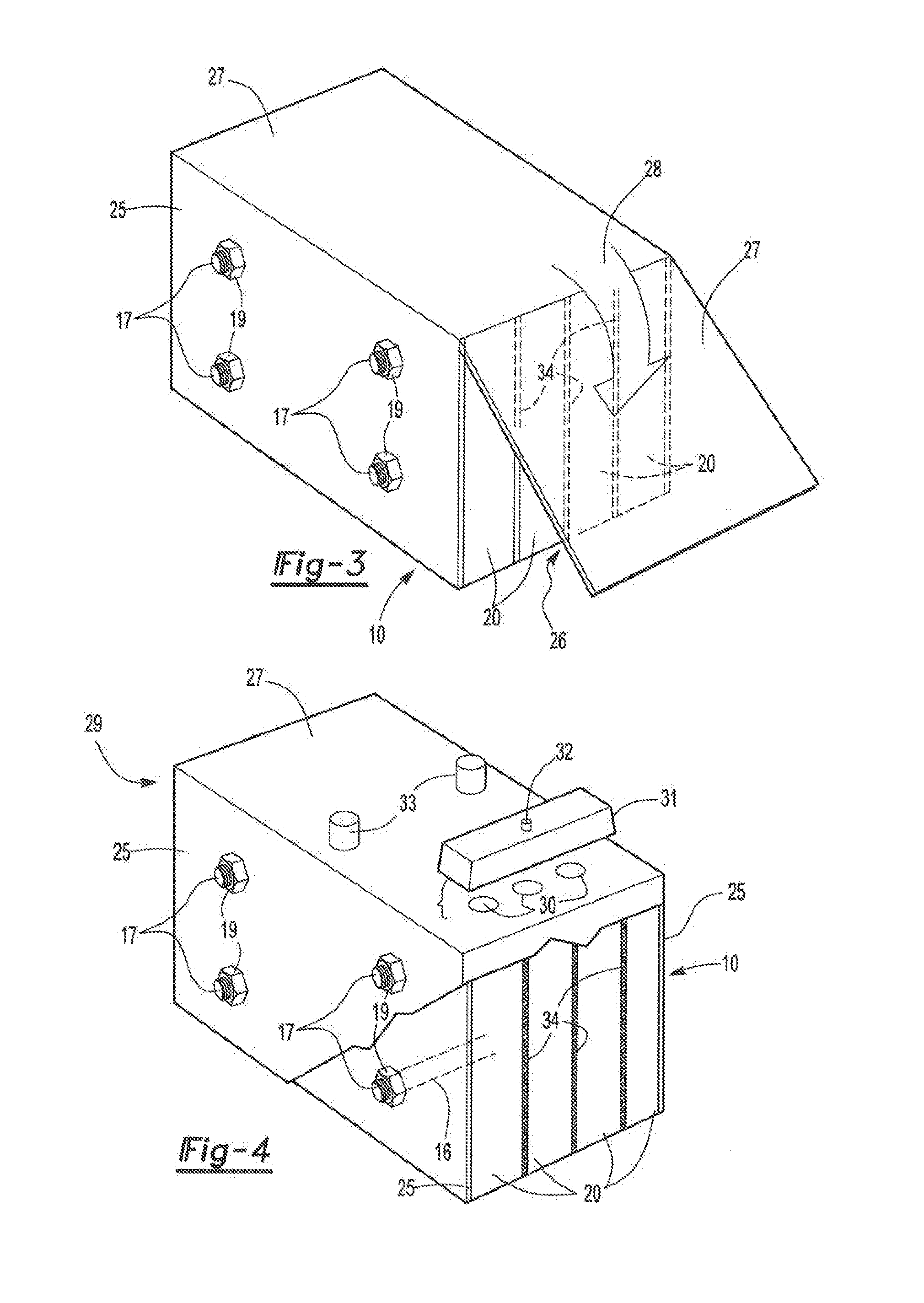Bipolar battery assembly
a battery and bipolar technology, applied in the field of bipolar battery assembly, can solve the problems of cell and battery non-functionality, and the seal of the electrochemical cell to rupture, so as to prevent electrical shorting and prevent electrical shorting
- Summary
- Abstract
- Description
- Claims
- Application Information
AI Technical Summary
Benefits of technology
Problems solved by technology
Method used
Image
Examples
example 1
[0058]A 12V bipolar battery is built using two monopole plates (positive and negative) and 5 bipolar plates. The plates are manufactured using methods as described herein and Commonly owned patent application titled BIPOLAR BATTERY ASSEMBLY, Shaffer II, at al. US 2010 / 0183920. In this example the plates are 197 mm by 173 mm and include four transverse channel holes. The plates are pasted using standard lead-acid active materials for the negative active material and positive active material. The battery is assembled by stacking onto four rods through the transverse channels. This ensures alignment of the plates. After each plate is placed four bushings are dropped onto the alignment rods. These bushings will establish the final compressed height of the separator. Absorbent glass mat separator is than stacked such that holes are out into the separator to accommodate the bushings. This process is repeated for all of the cells. The assembly is compressed and secured with temporary bolts...
example 2
[0062]A second battery is bunt similar to Example 1. In this example the transverse channels are filled with an epoxy resin. A cap feature is molded on the ends of the resin on the end plate to assist in supporting the compressive load. After assembly the battery is pressure tested with helium at 4 psi while immersed in a water tank. No visible leaks are observed. As before the battery is filled with acid and formed. The battery exhibits an OCV of 12.93V, a 20 hour discharge capacity of 17.8 amp hour (Ah) and a resistance of 24 milliohms.
example 3
[0063]A 96 volt battery is built using similar methods described in Example 1. The battery is but with a positive monopolar end assembly, a negative monopolar end assembly and 47 bipolar plates. In this example the transverse channels are tapped and a threaded plastic rod is inserted into the channels. The threaded rod extends past the monopole end plates. Similar to Example 1 the threaded rod is heat-staked to form the end-seal and secure compressive loads. After assembly the battery is pressure tested with 4 psi of helium; no leaks are observed. As before the battery is filled with acid and formed. The battery exhibits an OCV of 103.5V and a 20 hour capacity of 17 Ah.
PUM
| Property | Measurement | Unit |
|---|---|---|
| pressures | aaaaa | aaaaa |
| diameter | aaaaa | aaaaa |
| diameter | aaaaa | aaaaa |
Abstract
Description
Claims
Application Information
 Login to View More
Login to View More - R&D
- Intellectual Property
- Life Sciences
- Materials
- Tech Scout
- Unparalleled Data Quality
- Higher Quality Content
- 60% Fewer Hallucinations
Browse by: Latest US Patents, China's latest patents, Technical Efficacy Thesaurus, Application Domain, Technology Topic, Popular Technical Reports.
© 2025 PatSnap. All rights reserved.Legal|Privacy policy|Modern Slavery Act Transparency Statement|Sitemap|About US| Contact US: help@patsnap.com



